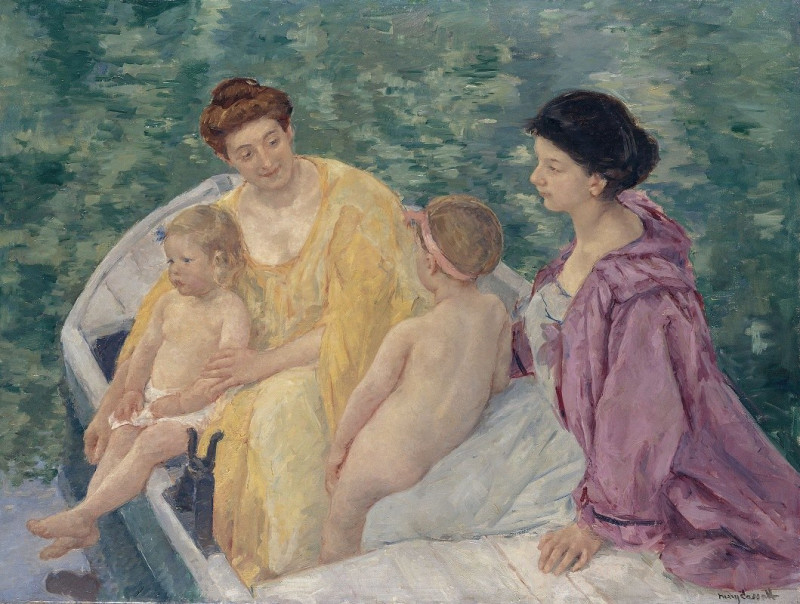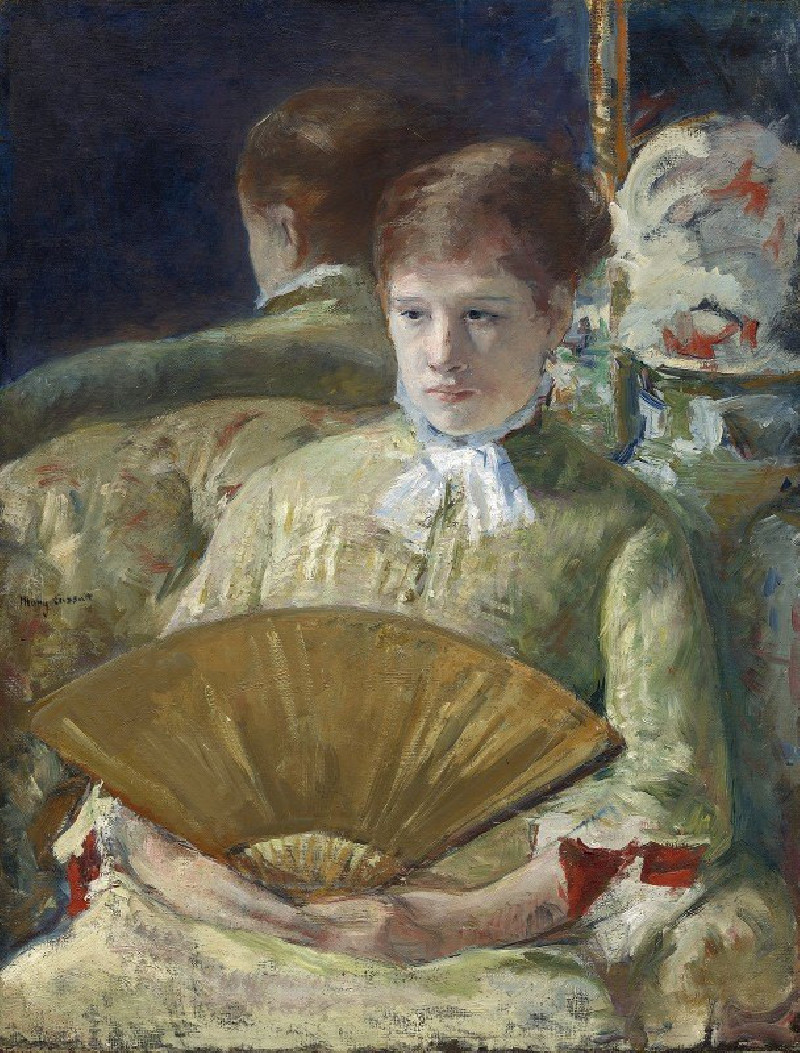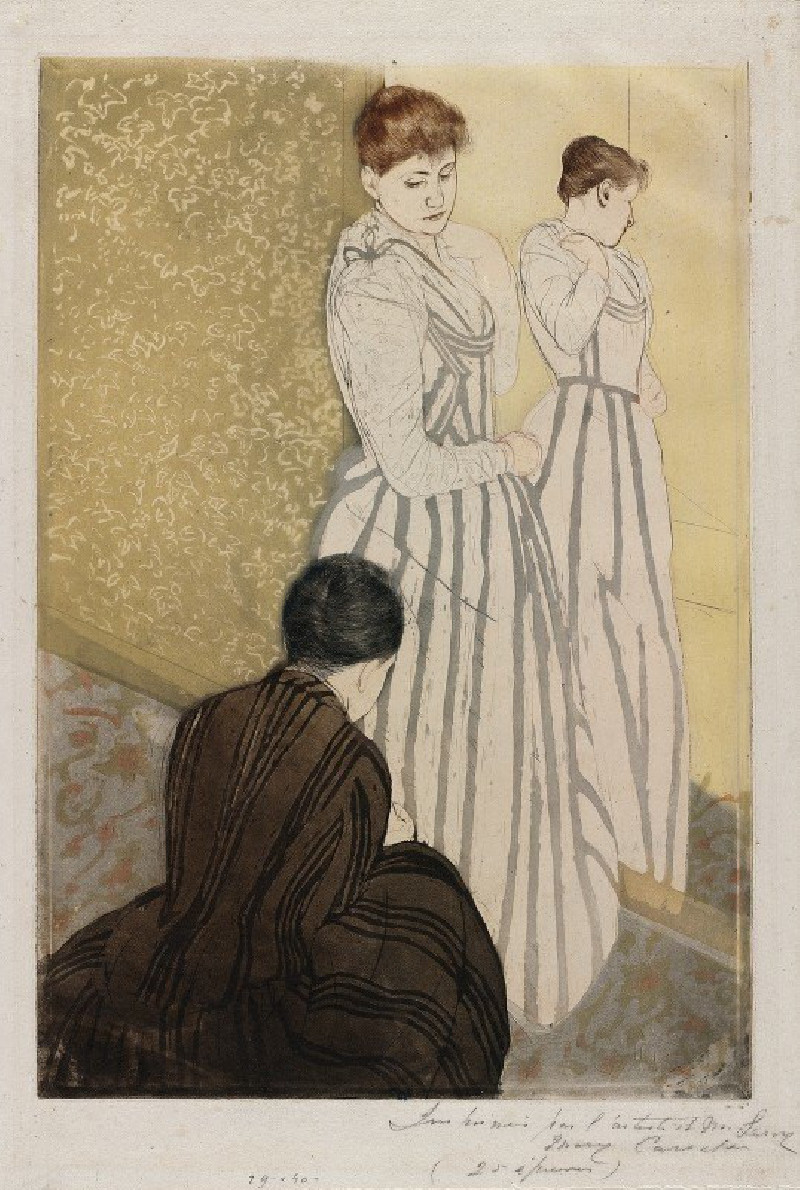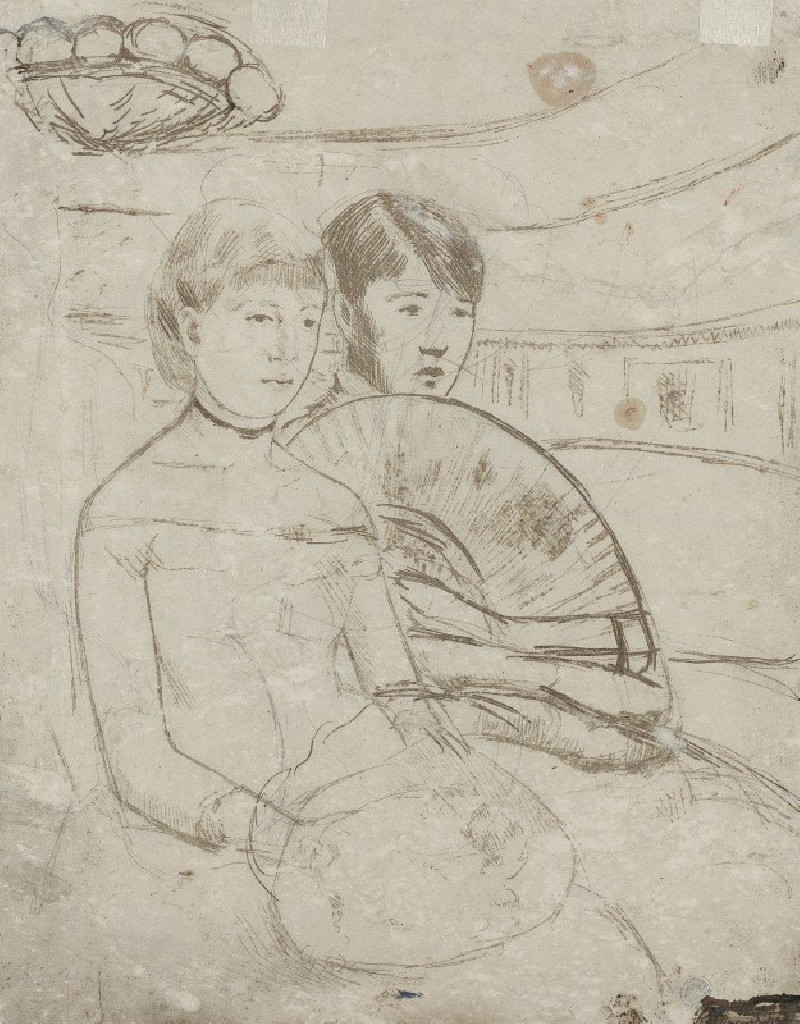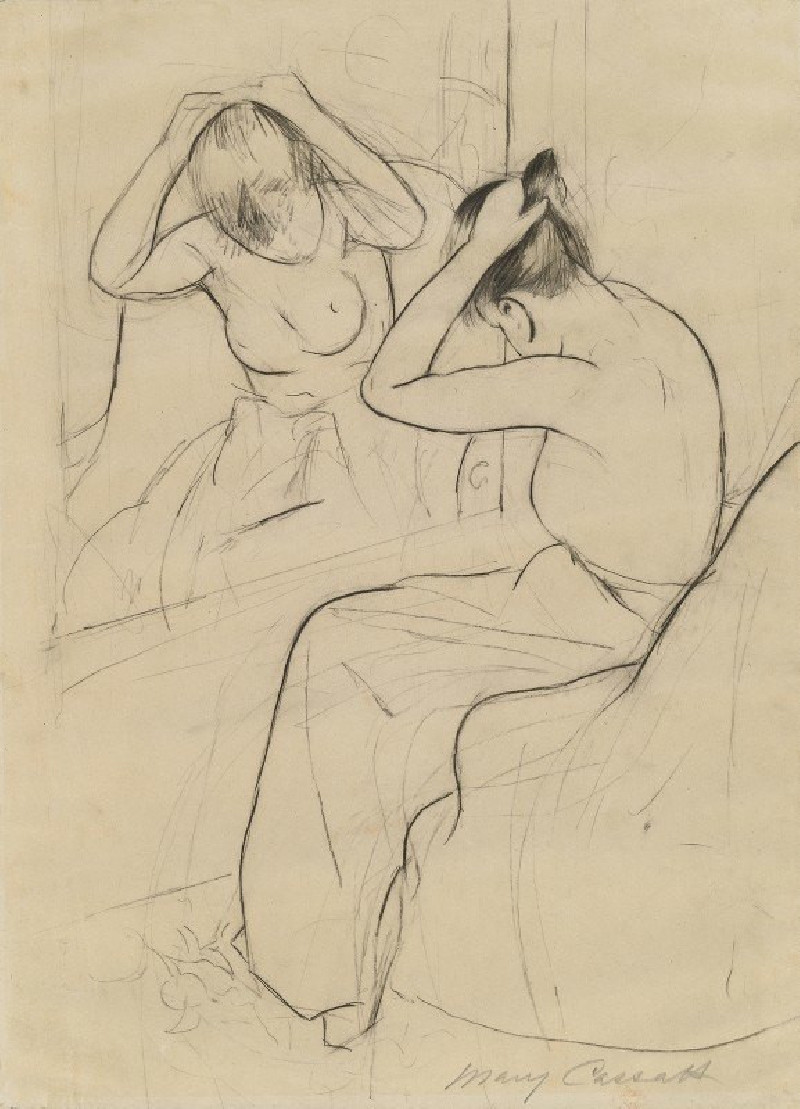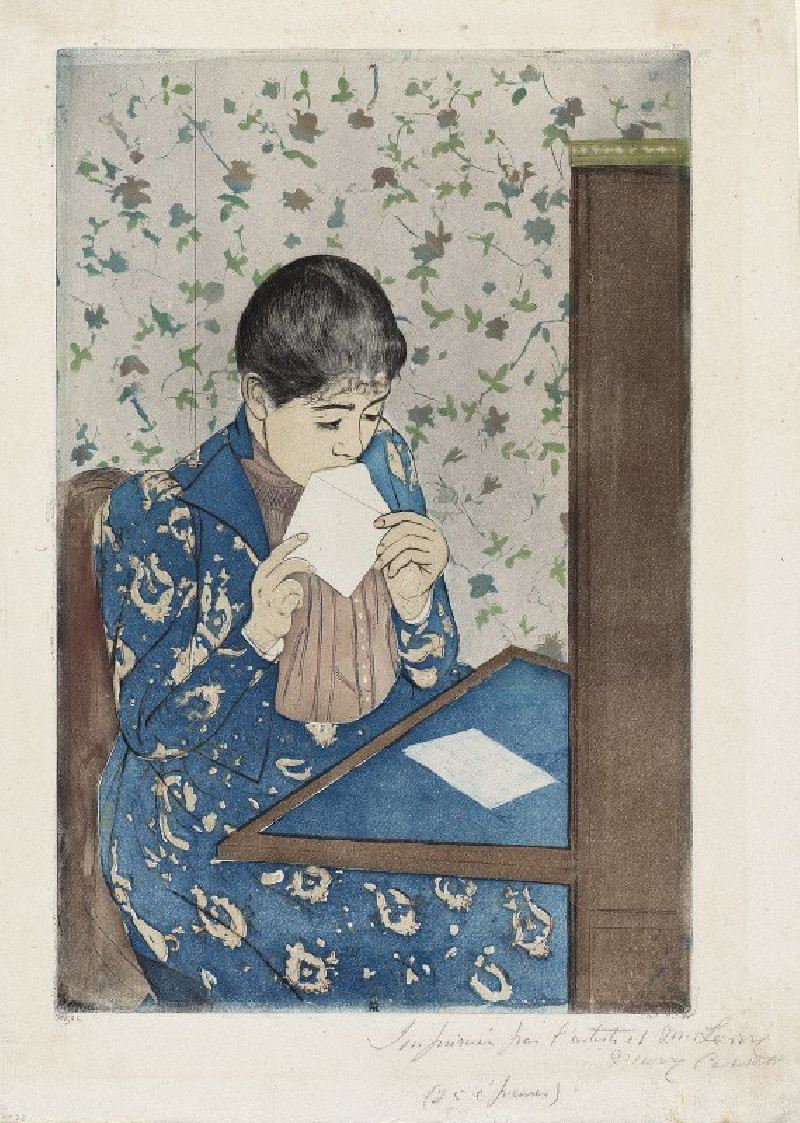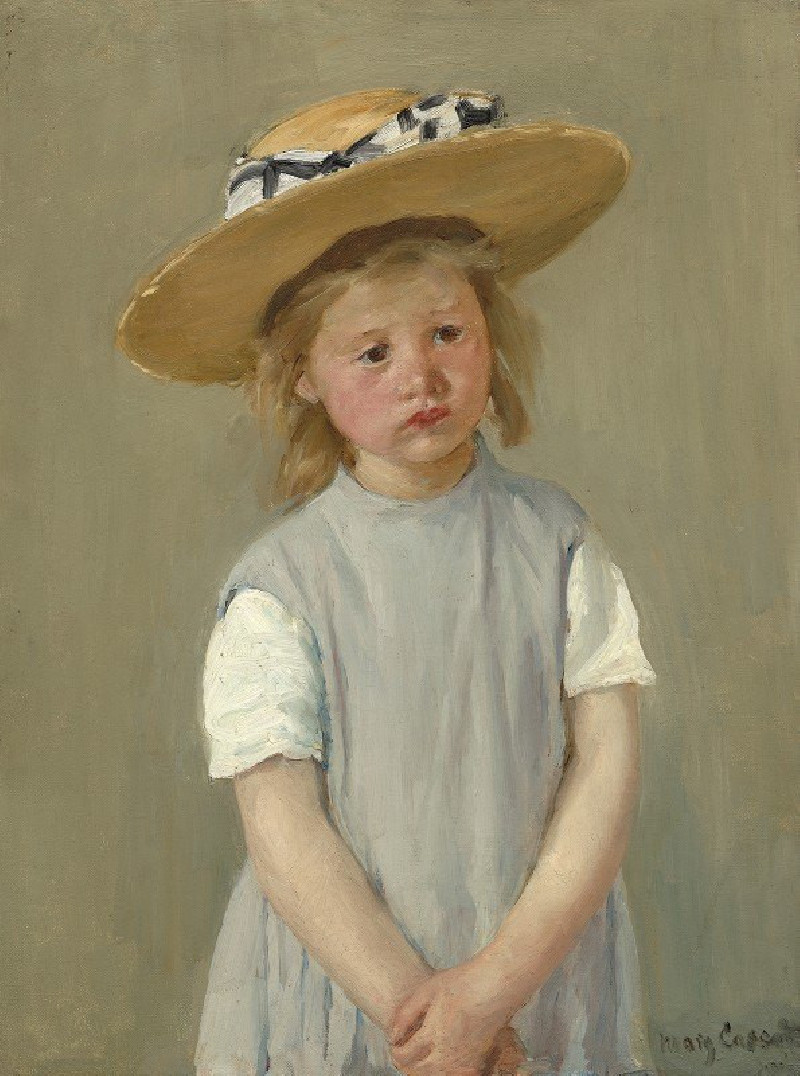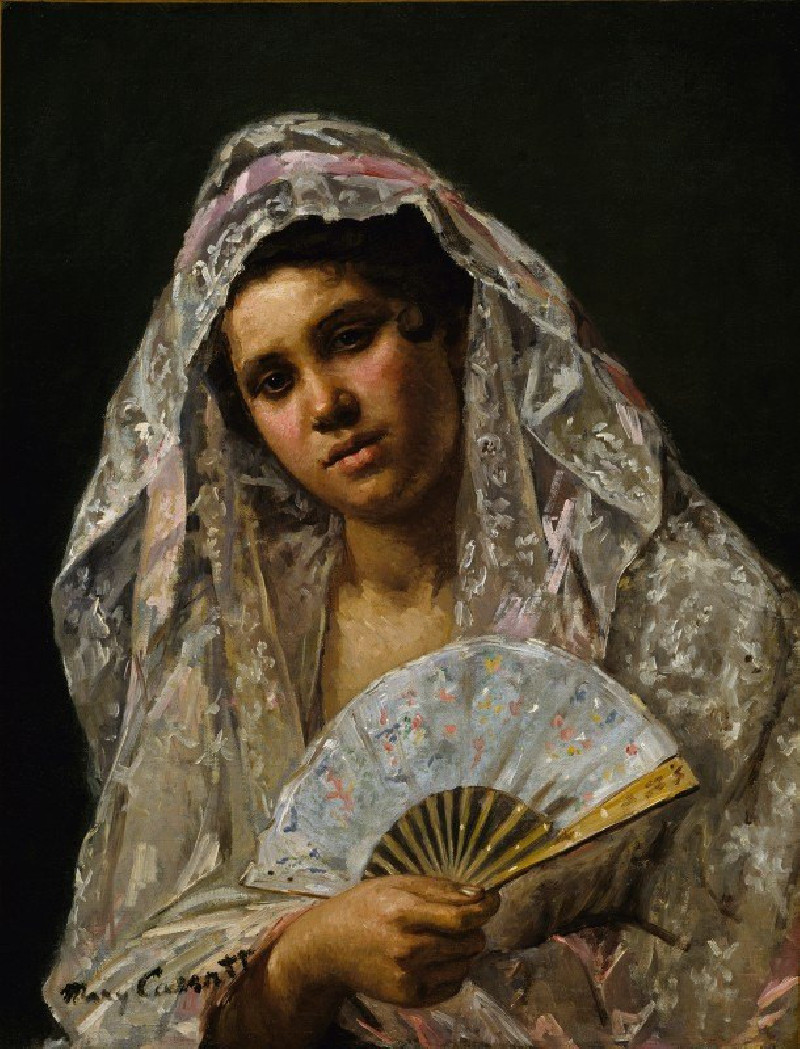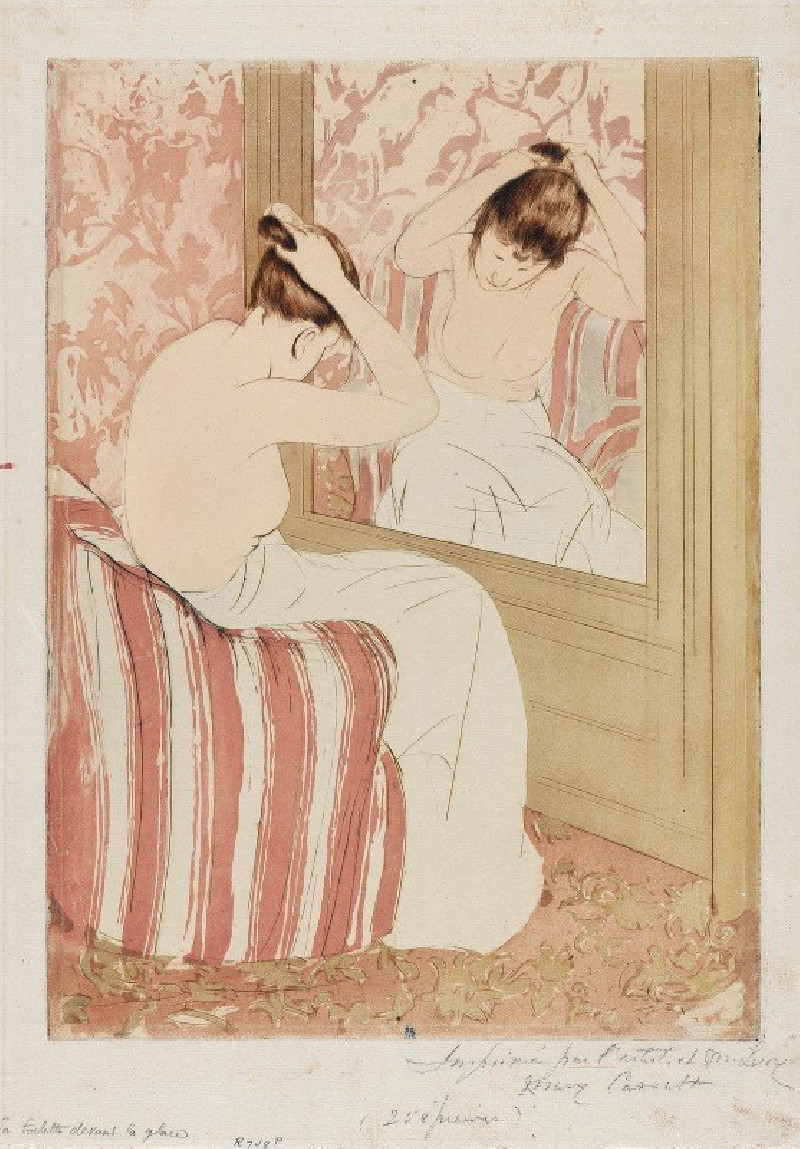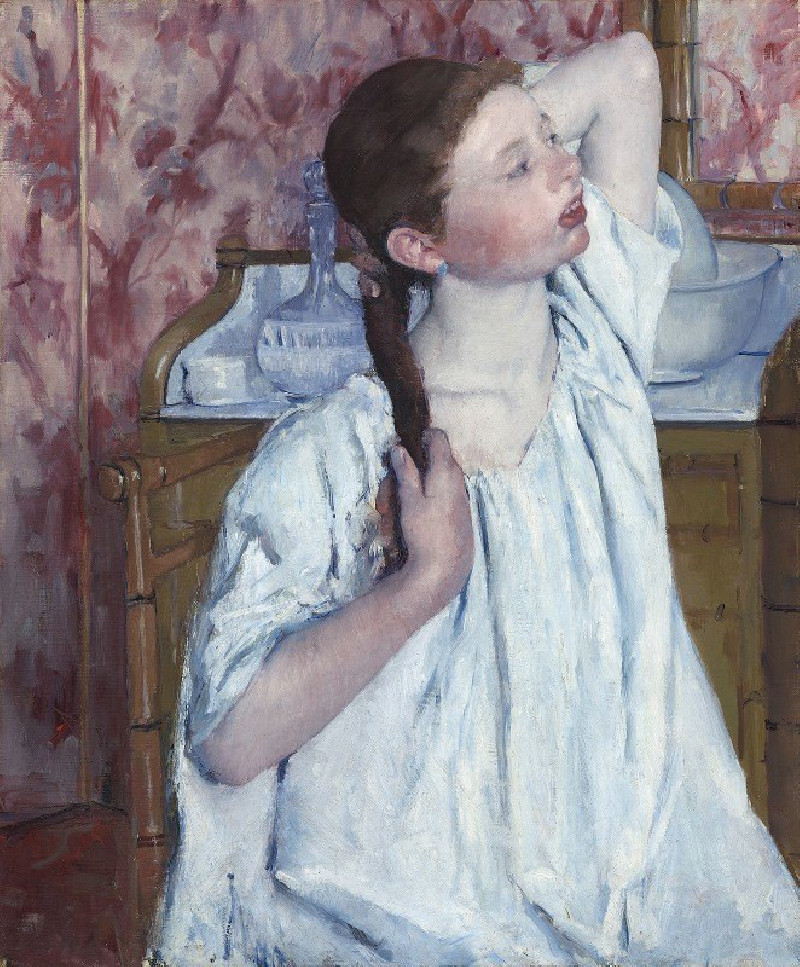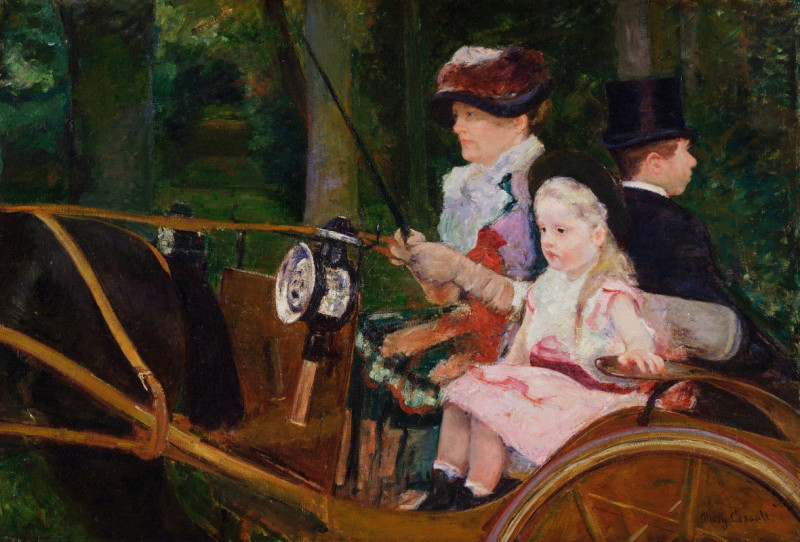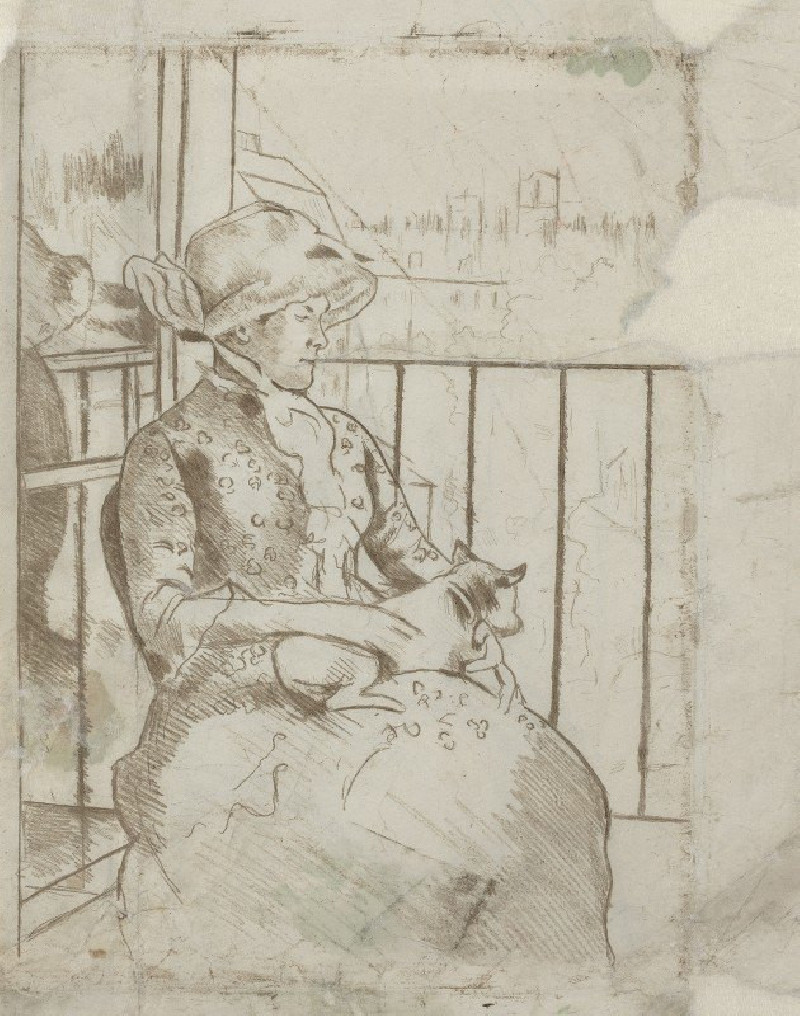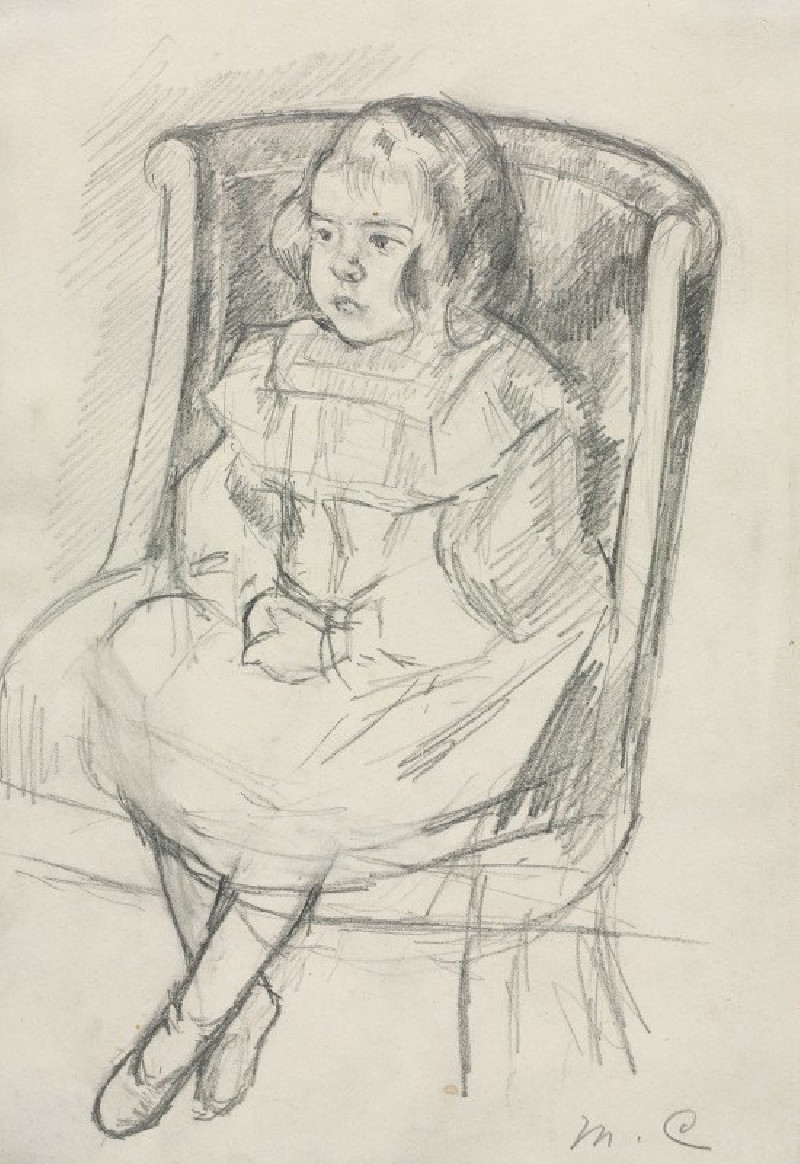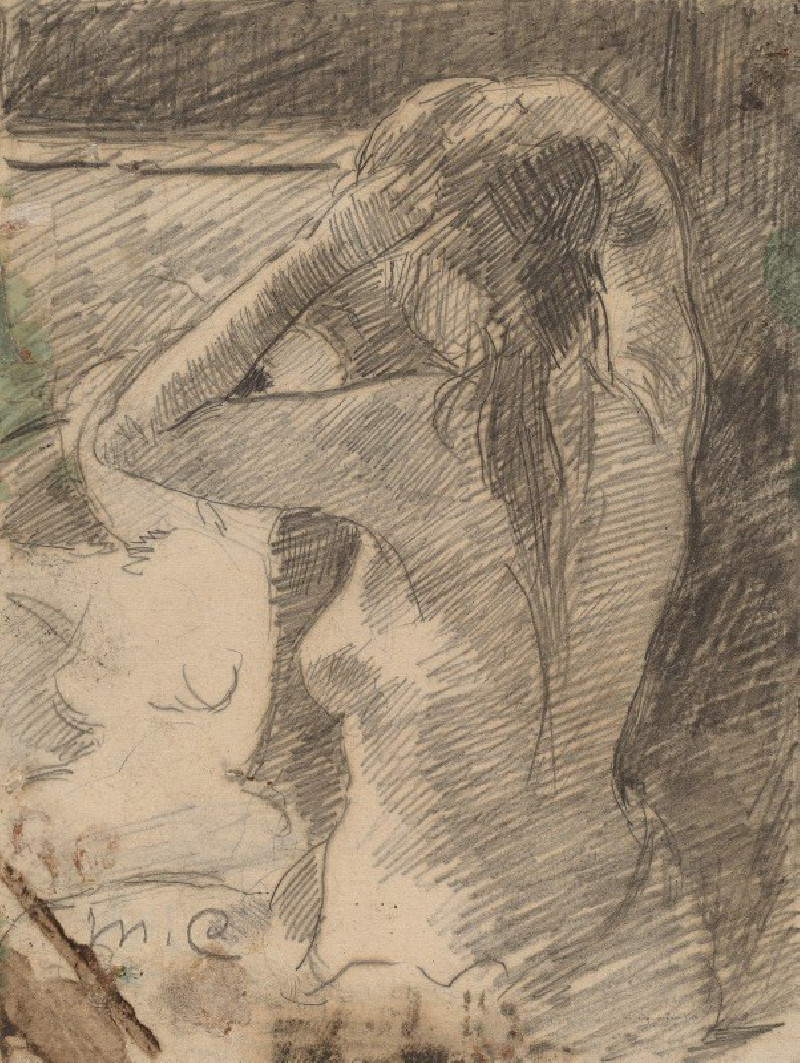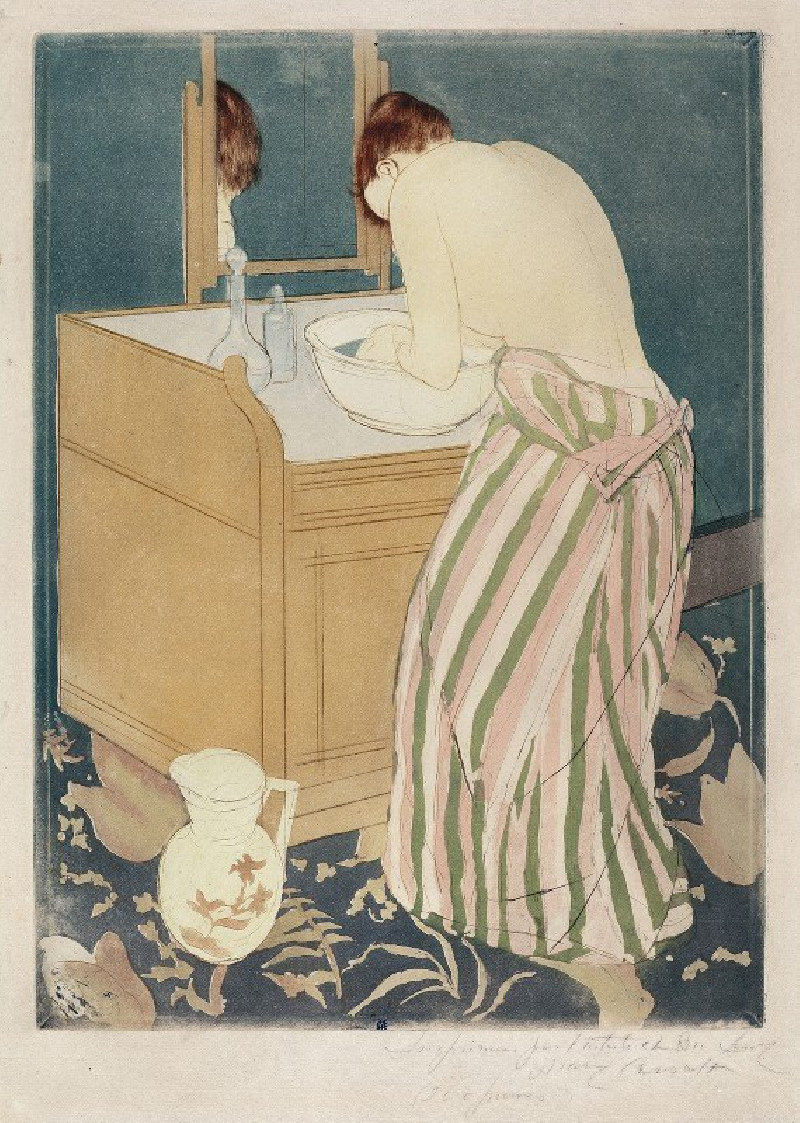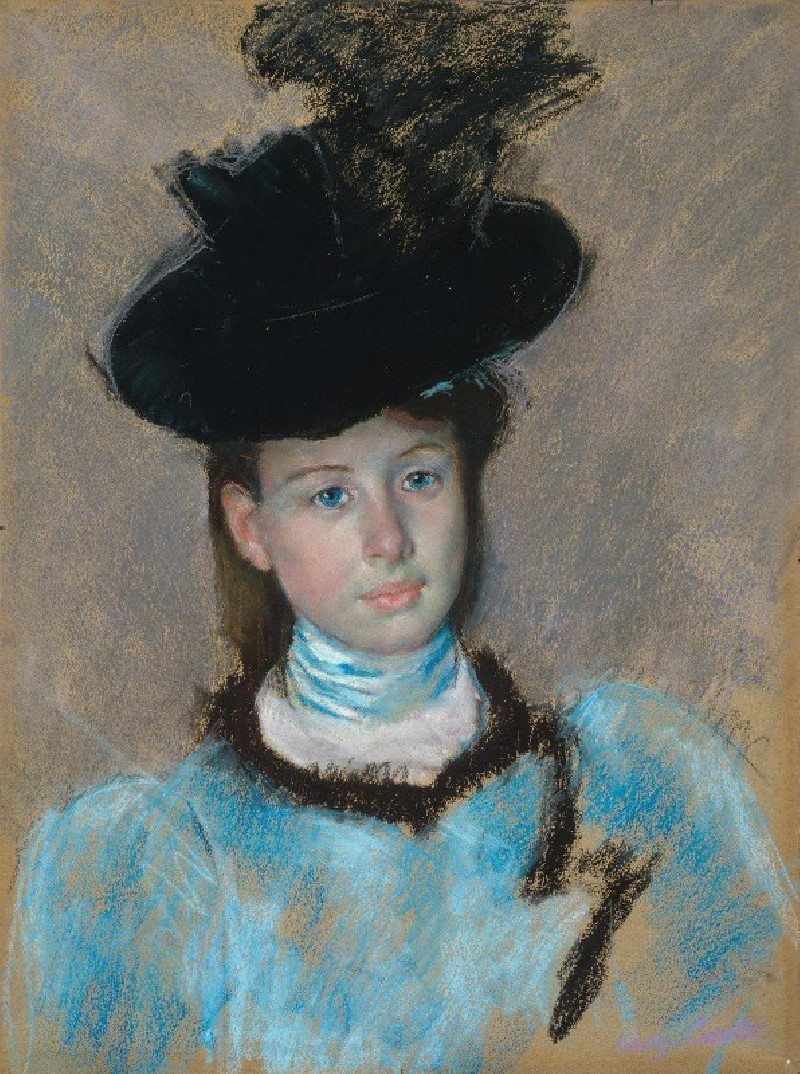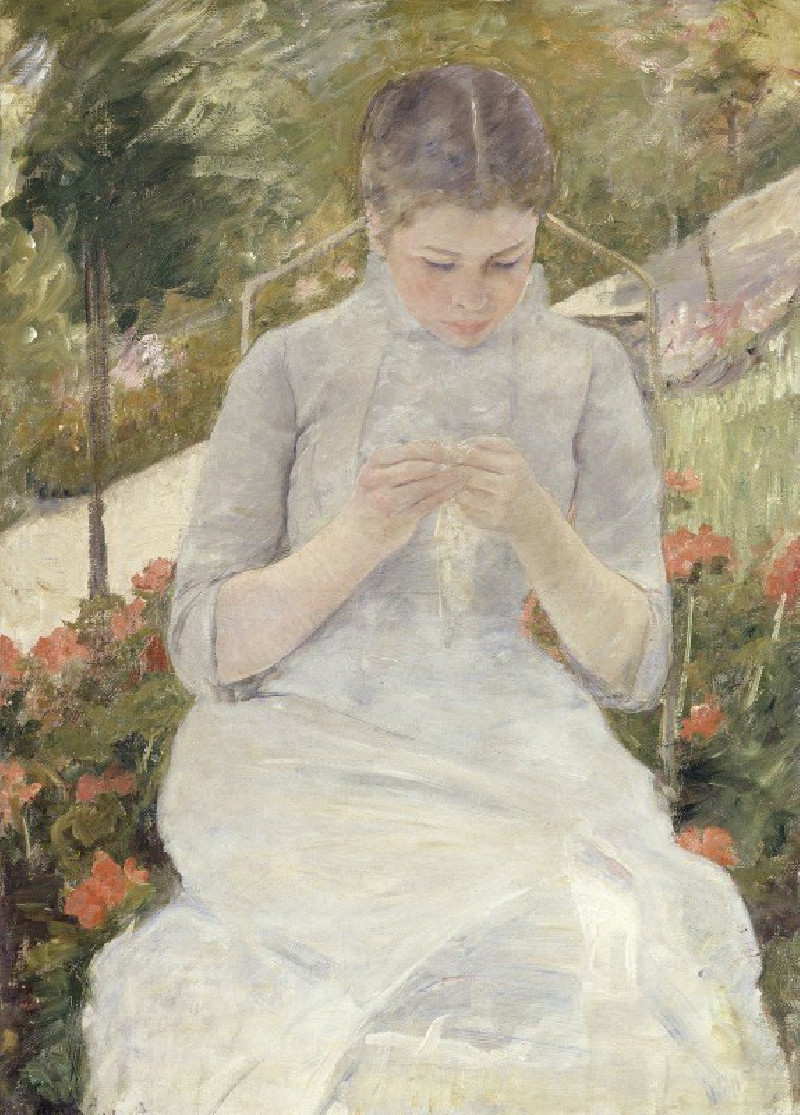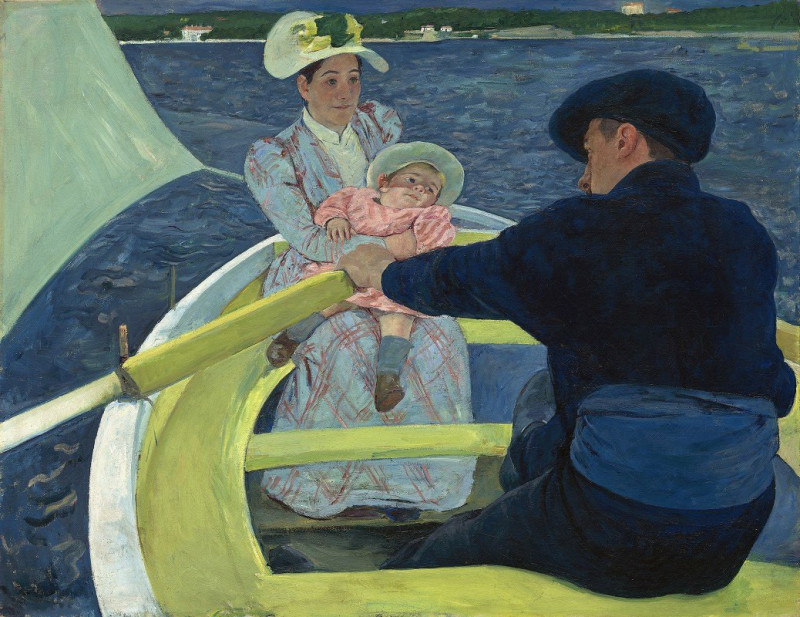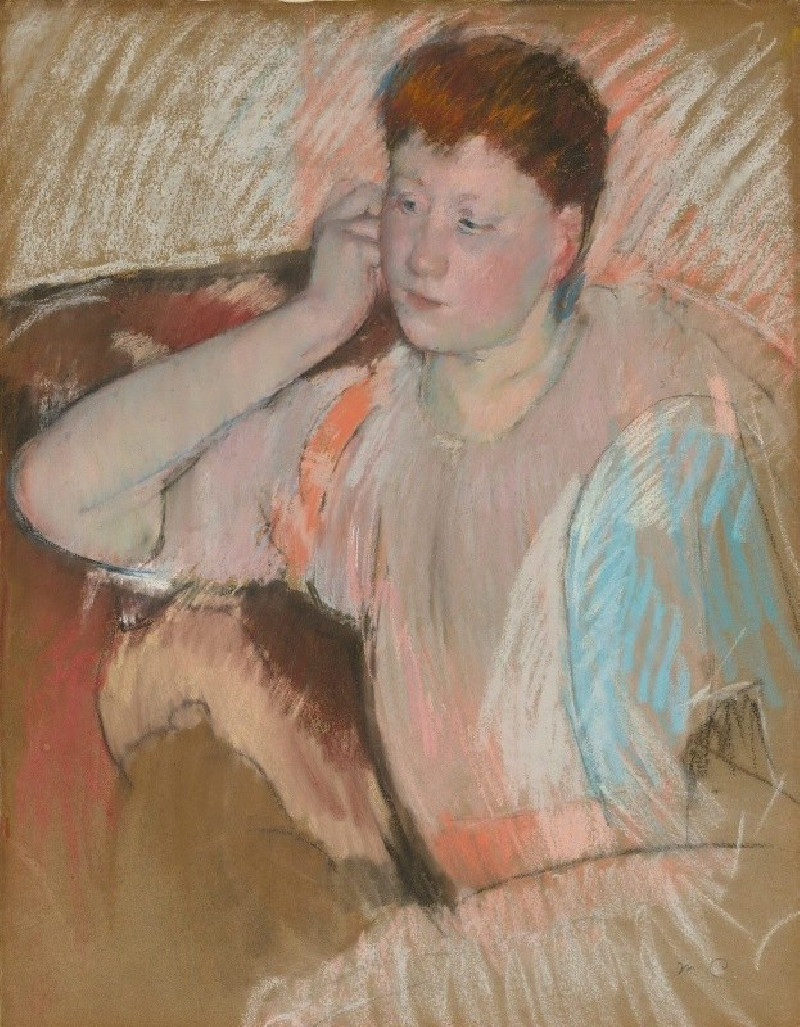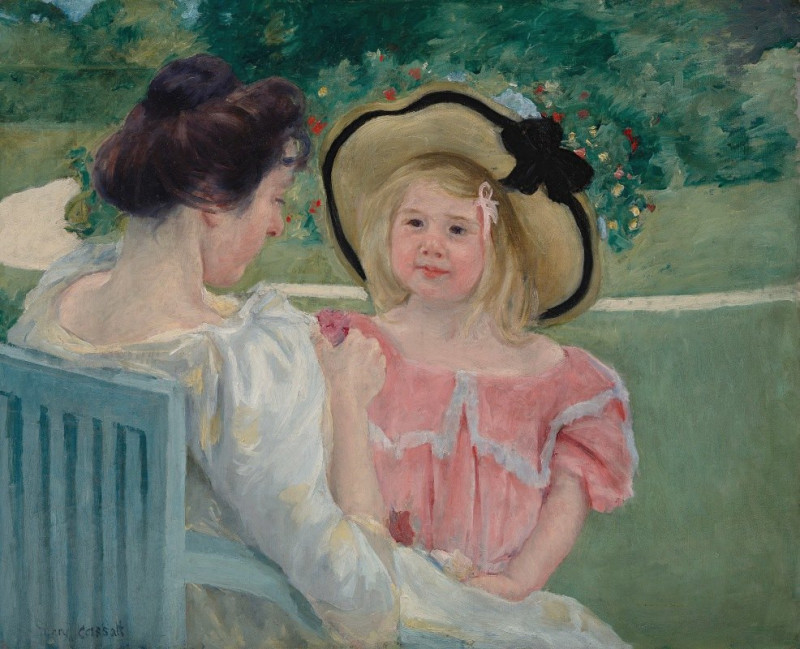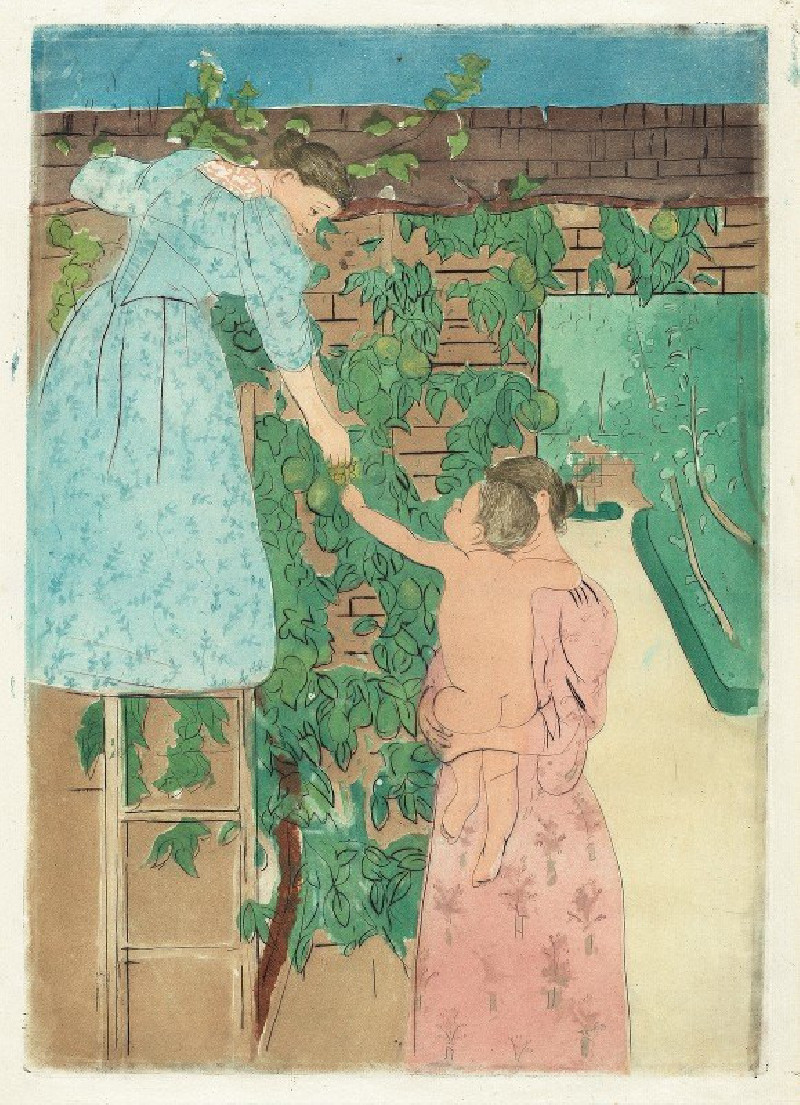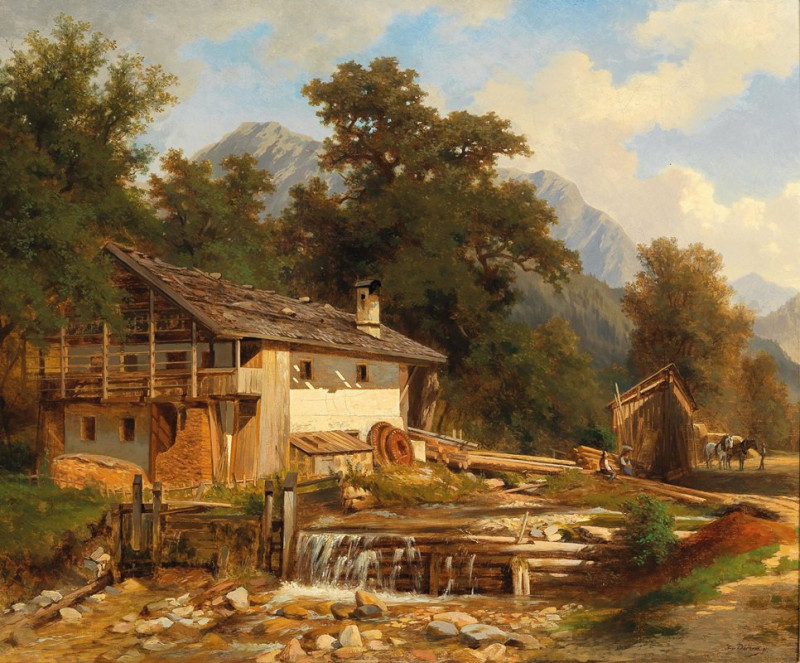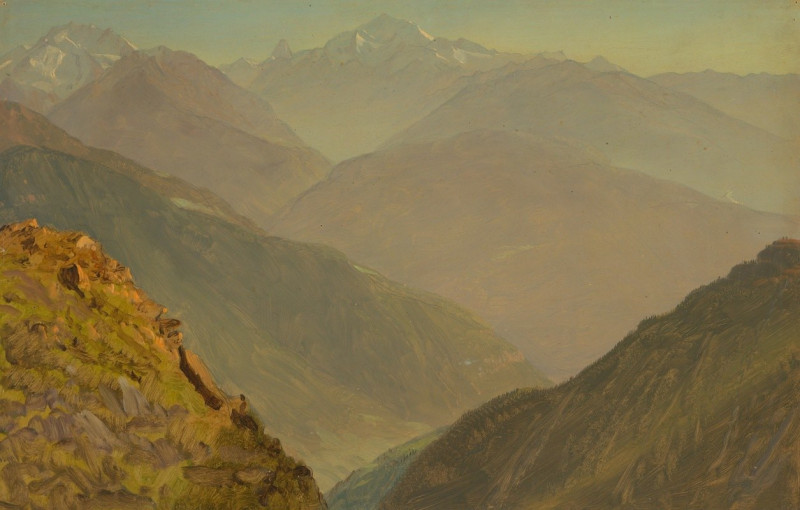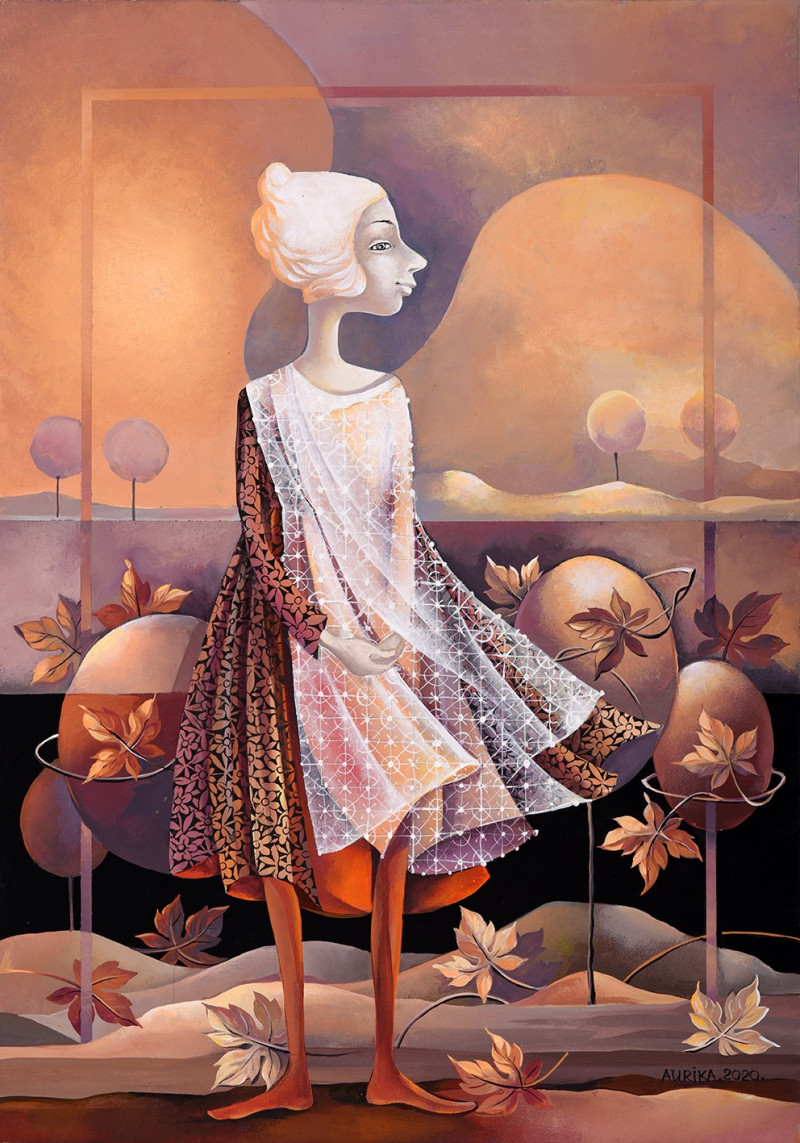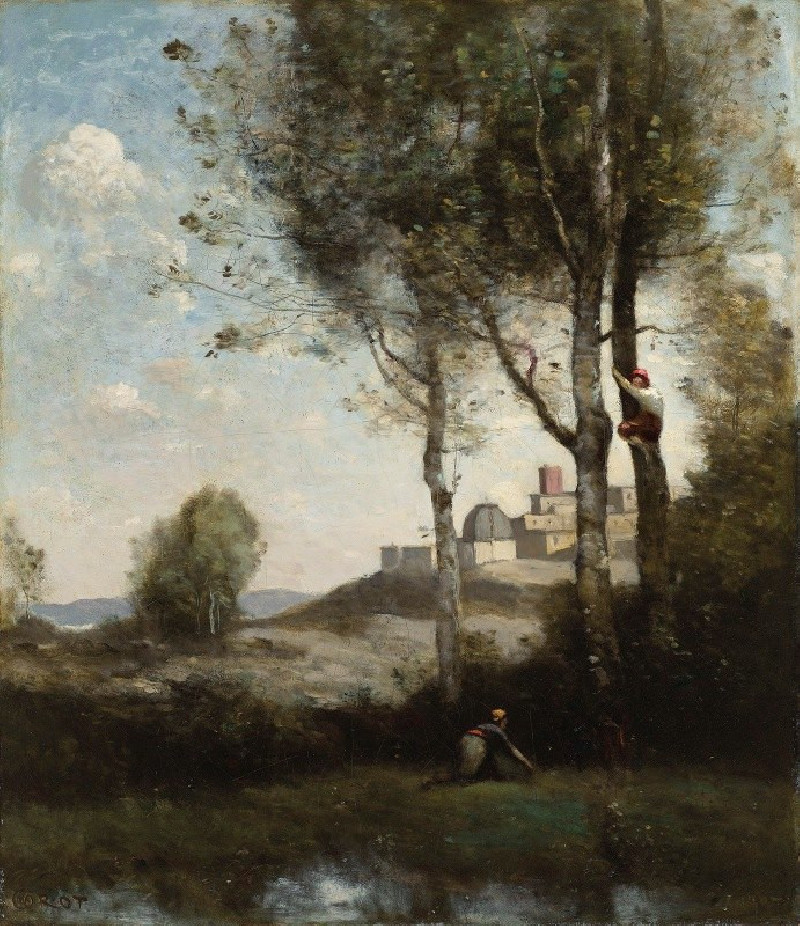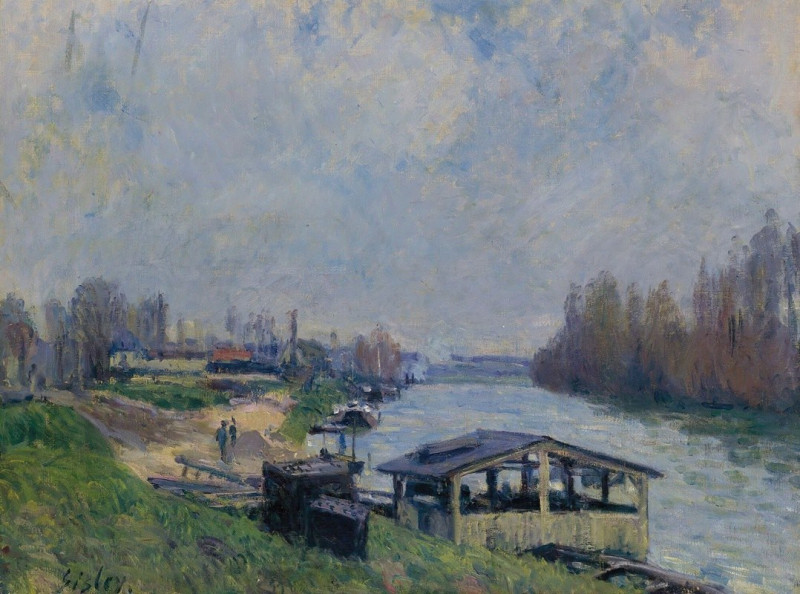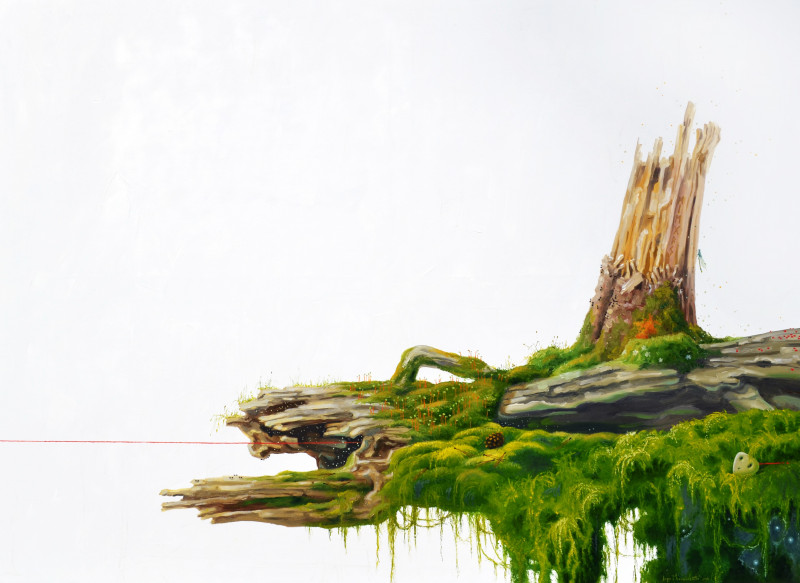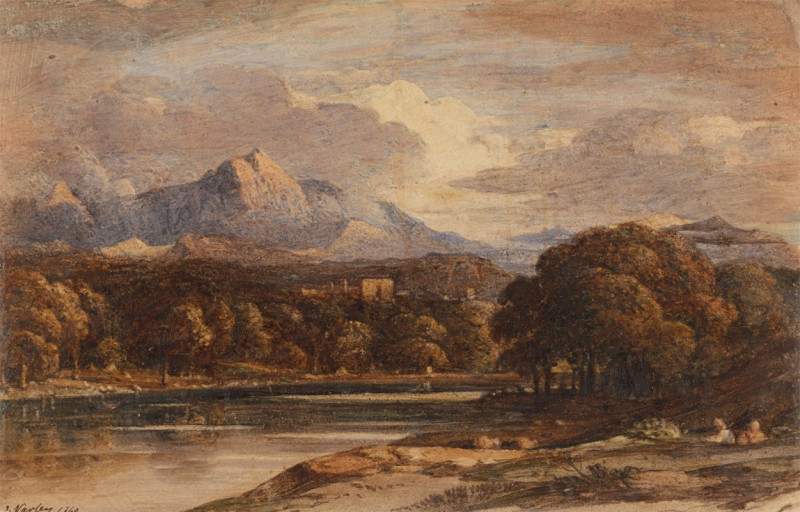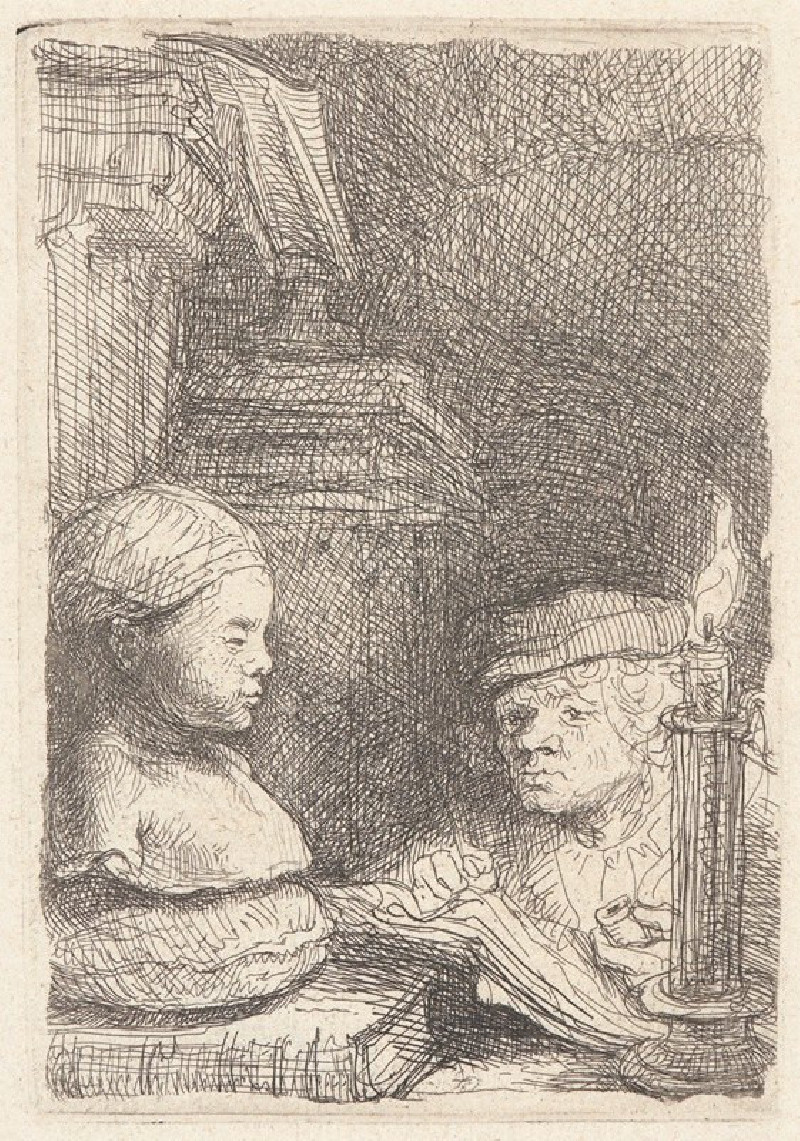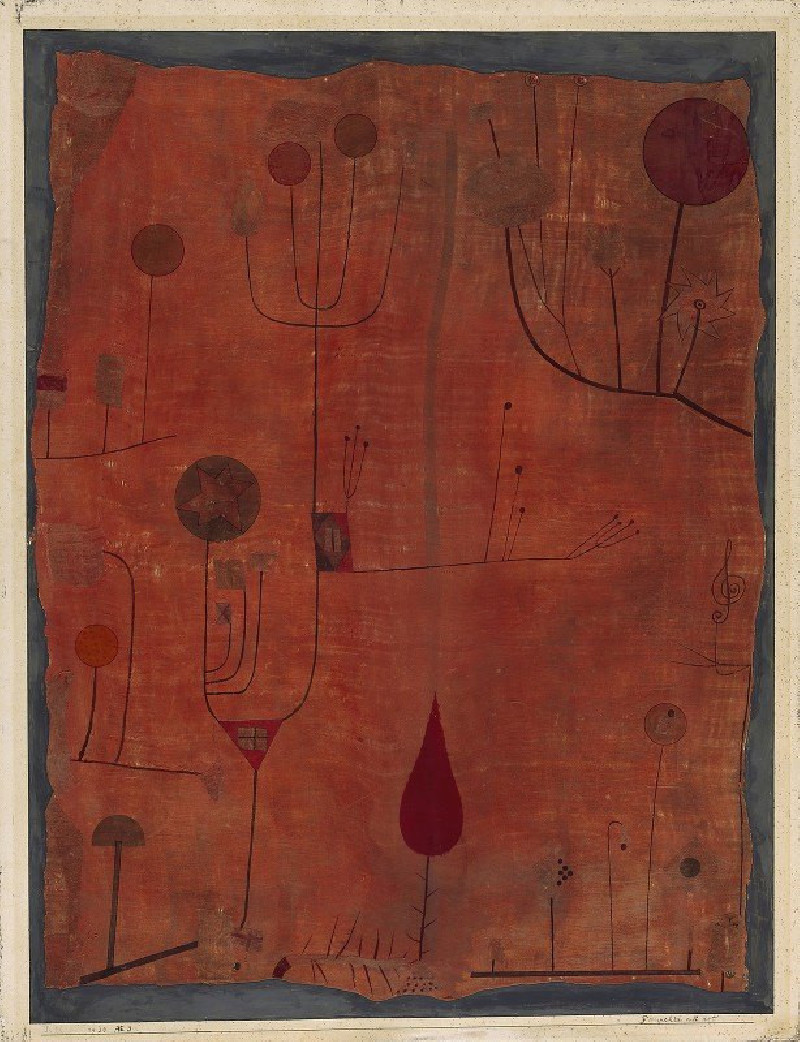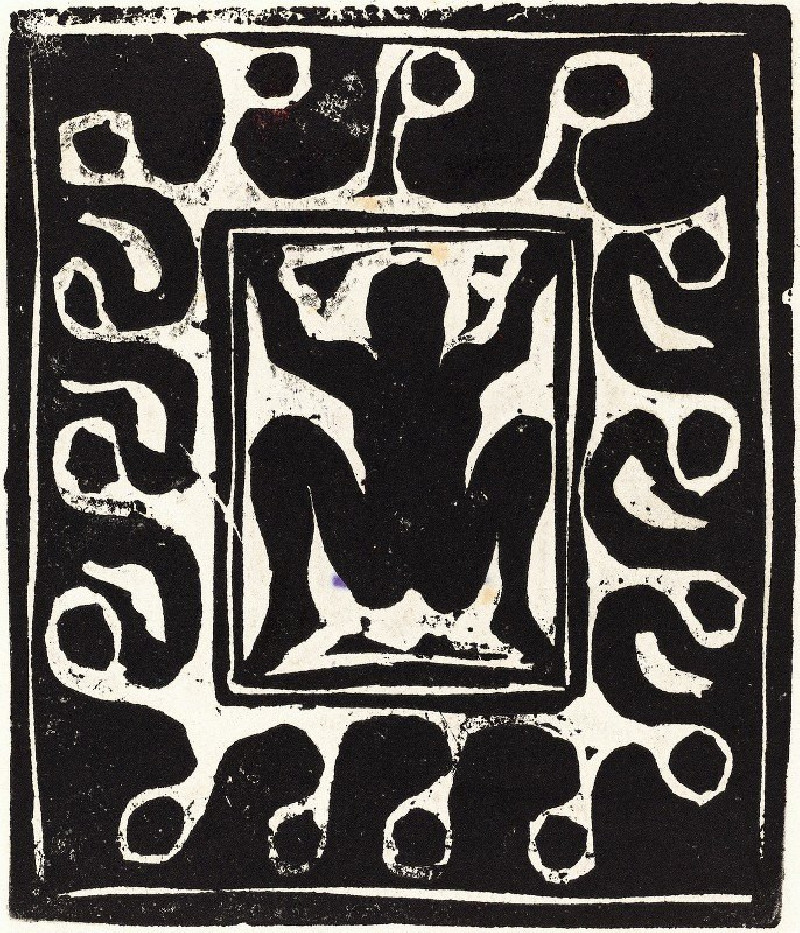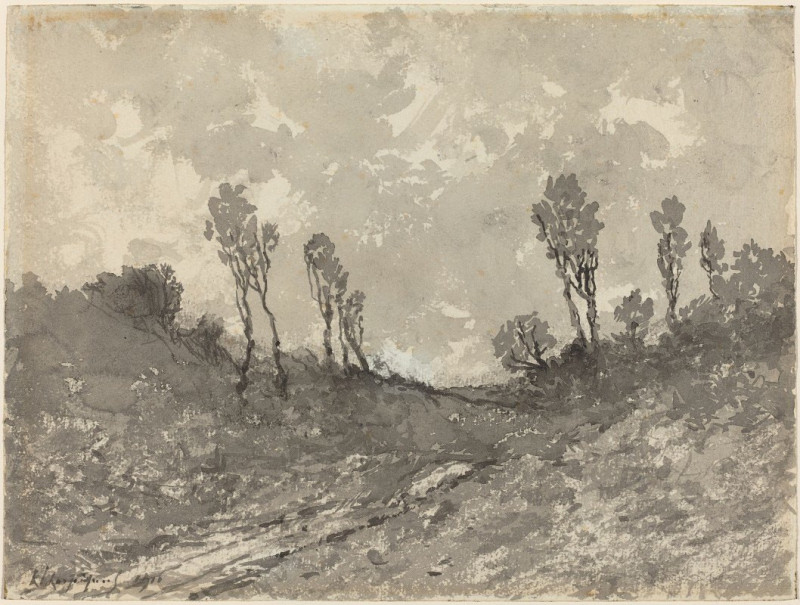Le bain (1910)
Technique: Giclée quality print
Recommended by our customers
More about this artwork
"Le bain," also known as "The Bath," painted by Mary Cassatt in 1910, captivates viewers with its intimate and tender depiction of a moment shared by women and children by the water’s edge. This painting is an exquisite example of Cassatt’s deft handling of both subject matter and color, showcasing her unique perspective within the Impressionist movement, where she was one of the few female artists to gain prominence.The scene unfolds in a serene outdoor setting, likely by a lake, where the soft play of light and shadow on the water creates a tranquil backdrop. Three figures dominate the composition — a woman in a vivid yellow dress holds a young child loosely draped in white, sitting next to another woman dressed in a striking, rich purple robe. To the side, a toddler perched on the edge of the boat dabbles their feet in the water, exuding a sense of curiosity and innocence.Cassatt's skill in capturing the subtleties of human expressions enriches the painting. The woman in yellow, with a gentle gaze, appears to be sharing a moment of joy or perhaps a quiet conversation with the standing woman, whose posture and downward glance suggest a moment of reflection or attentiveness. This interaction underscores Cassatt’s frequent exploration of the bonds between women and children, a theme that pervades much of her work.The use of color in "Le bain" is particularly notable; the vivid yellows and deep purples create a striking contrast that emphasizes the figures and adds vibrancy to the scene, making the figures nearly glow against the muted greens and blues of the water and foliage.
Delivery
Returns
Mary Stevenson Cassatt was an American painter and printmaker. She was born in Allegheny City, Pennsylvania (now part of Pittsburgh’s North Side), but lived much of her adult life in France where she befriended Edgar Degas and exhibited with the Impressionists. Cassatt often created images of the social and private lives of women, with particular emphasis on the intimate bonds between mothers and children.
She was described by Gustave Geffroy as one of "les trois grandes dames" (the three great ladies) of Impressionism alongside Marie Bracquemond and Berthe Morisot.In 1879, Diego Martelli compared her to Degas, as they both sought to depict movement, light, and design in the most modern sense.

